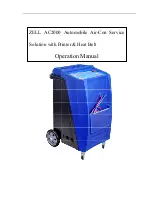
3
9399E-eIFU-0820
en
Rad-G™
Reusable Finger Clip Sensor
DIRECTIONS FOR USE
Reusable
LATEX
PCX-2108A
02/13
Not made with natural rubber latex
Non-Sterile
Prior to using this Sensor the user should read and understand the Operator’s Manual for the Device or Monitor and this Directions for Use.
INDICATIONS
The Rad-G™ reusable sensors are indicated for noninvasive spot-checking of functional oxygen saturation of arterial hemoglobin (SpO
2
) and pulse
rate (measured by an SpO
2
sensor) for use with adult, pediatric, and infant patients during both no motion and motion conditions, and for patients
who are well or poorly perfused in hospitals, hospital-type facilities, mobile, and home environments.
CONTRAINDICATIONS
The Rad-G reusable sensors are contraindicated for use on mobile patients or for prolonged periods of use. They are not intended for long-term
monitoring. They must be removed and repositioned to a different monitoring site at least every four (4) hours. Because individual skin conditions
and perfusion levels affect the ability of the site to tolerate sensor placement, it may be necessary to move the sensor more frequently.
DESCRIPTION
The Rad-G reusable sensors are for use only with Rad-G devices containing Masimo SET® oximetry and licensed to use Rad-G sensors.
The Rad-G sensor is only compatiable with the Rad-G device.
The Rad-G sensors have been verified with Masimo SET Oximetry Technology.
WARNING:
Masimo sensors and cables are designed for use with devices containing Masimo SET oximetry or licensed to use Masimo sensors.
WARNINGS, CAUTIONS, AND NOTES
• All sensors and cables are designed for use with specific monitors. Verify the compatibility of the monitor, cable and sensor before use,
otherwise degraded performance and/or patient injury can result.
• The sensor should be free of visible defects, discoloration and damage. If the sensor is discolored or damaged, discontinue use. Never use a
damaged sensor or one with exposed electrical circuitry.
• The site must be checked frequently or per clinical protocol to ensure adequate circulation, skin integrity and correct optical alignment.
• Exercise extreme caution; skin erosion, tissue ischemia, and/or pressure necrosis can be caused when the sensor is not frequently moved,
applied too tightly, or becomes too tight due to edema. Assess site as frequently as every (1) hour and move the sensor if there are signs of
loss of skin integrity and/or loss of circulation or perfusion.
• Do not use tape to secure the sensor to the site; this can restrict blood flow and cause inaccurate readings. Use of tape can cause skin
damage, and/or pressure necrosis or damage the sensor.
• Carefully route sensor and patient cable to reduce the possibility of patient entanglement or strangulation.
• Misapplied sensors or sensors that become partially dislodged may cause incorrect readings.
• Misapplications due to wrong sensor types can cause inaccurate or no readings.
• Inaccurate readings may be caused by abnormal venous pulsation or venous congestion.
• Venous congestion may cause under reading of actual arterial oxygen saturation. Therefore, assure proper venous outflow from monitored
site. Sensor should not be below heart level (e.g. sensor on hand of a patient in a bed with arm dangling to the floor).
• Venous pulsations may cause erroneous low readings (e.g. tricuspid valve regurgitation, Trendelenburg position).
• The pulsations from intra-aortic balloon support can affect the pulse rate displayed on the oximeter. Verify patient’s pulse rate against the
ECG heart rate.
• Avoid placing the sensor on any extremity with an arterial catheter or blood pressure cuff.
• If using pulse oximetry during full body irradiation, keep the sensor out of the radiation field. If sensor is exposed to the radiation, the reading
might be inaccurate or not provided for the duration of the active radiation.
• If using pulse oximetry during full body irradiation, keep the sensor out of the radiation field. If sensor is exposed to the radiation, the reading
might be inaccurate or the unit might read zero for the duration of the active radiation period.
• Do not use the sensor during MRI scanning or in a MRI environment as it may result in physical harm.
• High ambient light sources such as surgical lights (especially those with a xenon light source), bilirubin lamps, fluorescent lights, infrared
heating lamps, and direct sunlight can interfere with the performance of the sensor.
• To prevent interference from ambient light, ensure that the sensor is properly applied, and cover the sensor site with opaque material, if
required. Failure to take this precaution in high ambient light conditions may result in inaccurate measurements.
• Inaccurate readings may be caused by EMI radiation interference.
• Abnormal fingers, Intravascular dyes such as indocyanine green or methylene blue or externally applied coloring and texture such as nail
polish, acrylic nails, glitter, etc. may lead to inaccurate or no readings.
• High levels of COHb or MetHb may occur with a seemingly normal SpO
2
. When elevated levels of COHb or MetHb are suspected, laboratory
analysis (CO-Oximetry) of a blood sample should be performed.
• Elevated levels of Carboxyhemoglobin (COHb) may lead to inaccurate readings.
• Elevated levels of Methemoglobin (MetHb) may lead to inaccurate readings.
• Elevated levels of total bilirubin may lead to inaccurate readings.
• Inaccurate readings may be caused by severe anemia, very low arterial perfusion, or extreme motion artifact.
• Hemoglobinopathies and synthesis disorders such as thalassemias, Hb s, Hb c, sickle cell, etc. may cause inaccurate readings.
• Inaccurate readings may be caused by vasospastic disease such as Raynaud’s, and peripheral vascular disease.
• Inaccurate readings may be caused by elevated levels of dyshemoglobin, hypocapnic or hypercapnic conditions and severe vasoconstriction
or hypothermia.
• Readings may be affected under very low perfusion conditions at the monitored site.
• Readings provided with a low signal confidence indicator may not be accurate.
• Do not modify or alter the sensor in any way. Alteration or modification may affect performance and/or accuracy.
• Clean the sensors prior to reuse on multiple patients.
• Do not use undiluted bleach (5% - 5.25% sodium hypochlorite) or any cleaning solution other than those recommended here because
permanent damage to the sensor may occur.




































